AM I FALLING APART?
Yesterday I published an article on sleep issues, relative to our physical health. This was based on my personal experience with sleep deprivation and my research on the topic. Since over 100 million Americans also deal with problems related to sleep quality, this seemed a worthy topic to address.
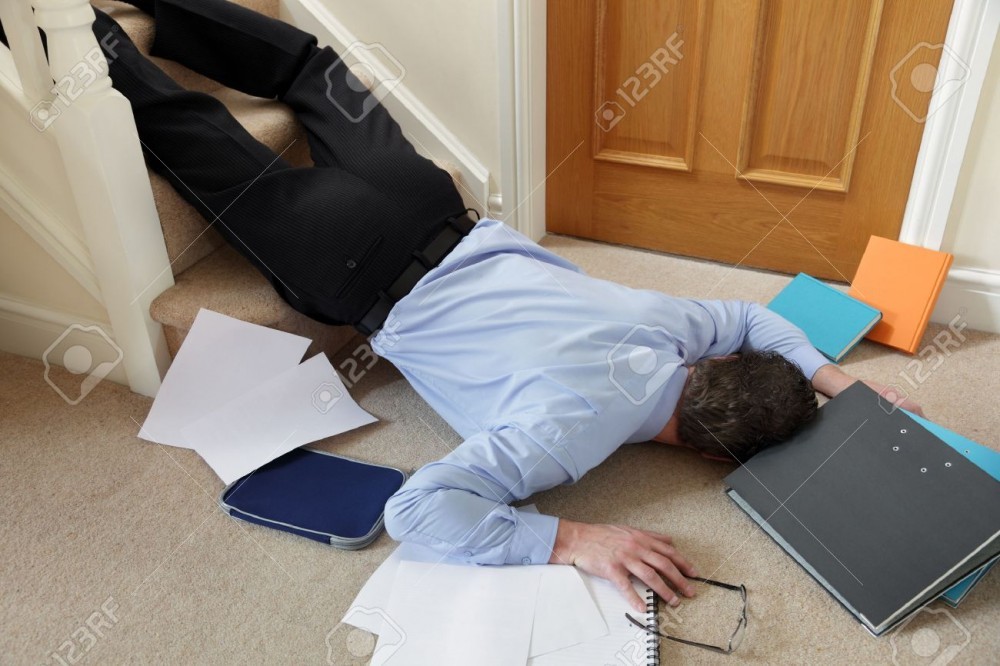
Today I am moving to another problem that I am experiencing, rotator cuff pain. I incurred a rotator cuff sprain a few months ago, most likely from my workouts. My sports medicine doctor gave me an injection and ordered an x – ray. The x – ray revealed lots of arthritis and this was addressed as “impingement syndrome”. Icing and resting of my right shoulder were recommended.
I have used this type of shoulder brace for icing and heating. The link is to Amazon. as an Amazon associate, I may earn from qualifying purchases.
A couple of days ago, the pain in my right shoulder returned. This morning, I saw my doctor and received another injection directly into my right deltoid area. He also gave me a list of therapy exercises to do daily. My workout schedule has now changed to the following:
- A 6 minute abdominal workout, shown here. This is intense and productive. There is nothing to buy; this is a bodyweight only routine.
- 5 rotator cuff strengthening exercises, to be specified later in this post.
- A 20 minute treadmill routine, raising the speed every minute. The distance is one mile. This will be raised to 30 minutes later and then maybe 40 minutes. After a lengthy layoff, I am now building back my workouts.
THE ROTATOR CUFF
Rotator cuff muscles and tendons hold the shoulder joint in place and allow the arm and shoulder to move. Irritation or damage may be recognized with overhead lifting and by moving the shoulder to the side.
Tendinitis may occur by the following:
- Sleeping on the same arm at night
- Lifting weights overhead
- Playing a sport that entails overhead activity, such as tennis
- Aging
- Holding the arm in the same position for lengthy periods of time
- Working overhead, such as painting
- Poor posture
I have been involved in the top 4 of the activities shown above. At this point, I have not had an MRI and don’t believe that surgery will be indicated, though that may be wishful thinking. It is nice to know that the surgery would be of the arthroscopic kind if ever necessary. Note below an illustration of rotator cuff tendinitis.
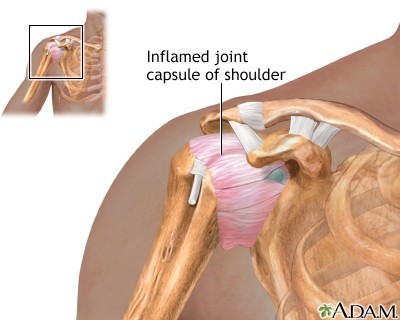
Here is a brief video by Dr. Carl A. DiRaimondo. This is an excellent explanation of the subject matter, in my opinion.
ROTATOR CUFF THERAPY EXERCISES
I have become a frequent visitor to the office of my sports medicine physician. He has helped me with trigger finger injections, wherein all 8 fingers (no thumbs) are treated periodically. He has injected my knees and now my rotator cuff area. He has treated me for medial epicondylitis, or golfer’s elbow. He has produced custom orthotics for me. This good doctor refers me for x- rays as needed and for several types of physical therapy. He also referred me for spinal stenosis surgery, which was quite successful. I believe that I see this doctor more than all others combined.
After I got a shoulder and finger injection this morning, he sent me home with a handout of exercises to strengthen the rotator cuff. I am listing below the exercises and paraphrasing his instructions, as well as seeking pertinent images to illustrate the movements. All of the movements involve Thera – bands or the equivalent.
THERA – BAND SEATED ROW – attach the middle of the band to a door anchor or to your feet. While sitting, grasp each end of the band and pull inward to your chest. Hold and slowly return. Keep your back straight.
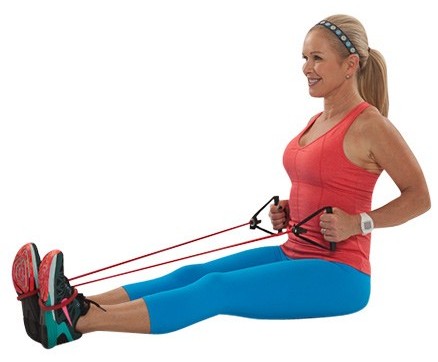
THERA – BAND SHOULDER EXTERNAL ROTATION – attach one end of the band securely at waist level. Grasp the other end of the band and pull away from the point of attachment. Rotate your forearm outward. Hold and then slowly return. Your forearm must be parallel to the ground and your elbow at your side.

THERA – BAND SHOULDER INTERNAL ROTATION – attach one end of the band securely at waist level. Pull the other end away from the wall . Hold and slowly return. As in the previous movement, keep your forearm parallel to the ground and your elbow at your side.
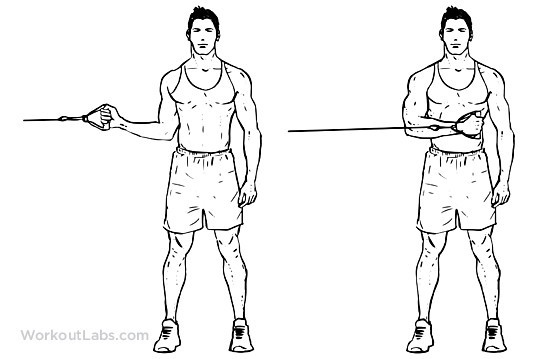
THERA – BAND ABDUCTION AT 45 DEGREES – attach one end of the band securely and hold the other end. Place your arm in front of your body, your elbow flexed at 90 degrees. Then pull your shoulder to 45 degrees abduction. Hold and slowly return.

THERA – BAND FORWARD PUNCH WHILE STANDING – wrap the band around the middle of your back. Hold the ends of the band in front of your body, with elbows bent at your sides. Extend elbows forward as you push the band away from your trunk. Avoid leaning back. Hold and slowly return. This exercise may also be done by attaching the band securely to a door and using one arm at a time.
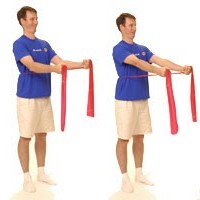
CONCLUSIONS
A couple of the above illustrations showed resistance cords with handles. These were not Thera – bands, which generally have no handles at all. Both types can be used efficiently. Thera – bands may be wrapped around your body more easily and resistance cords may provide anchoring to a door more efficiently. Both of these two types of resistance are in the “low impact” category. They are excellent for beginners, for use after a layoff or for remedial / therapy purposes. Thera – bands are generally provided or recommended by sports medicine doctors. I personally use both.
Where may I get these bands? The answer is Amazon, of course.
First of all, here is a set of resistance cords, including all accessories needed.
A few Thera – band options are shown below:
In my immediate future, i.e. for a week or two, I will limit my routine to core workouts, therapy exercise and treadmill walking.
I will return to upper body workouts as soon as my shoulder permits, but these will begin with resistance cord routines. To state the obvious, physical fitness is not a linear venture.
Hopefully, my sports medicine issues and therapy will be of benefit to others who may encounter similar experiences. Please don’t be deterred by sprains or soreness. Keep playing sports and working out. Good results are inevitable.
Please leave any comments or questions in the “Comments” box below. Or email me, richard@myworkoutathome.com.
Be well!